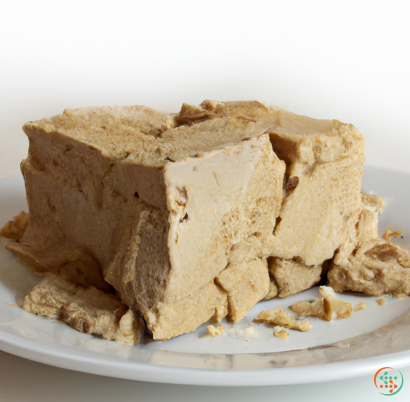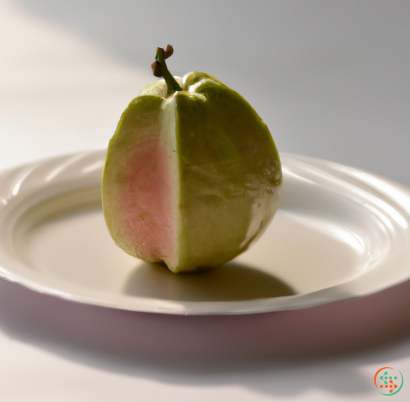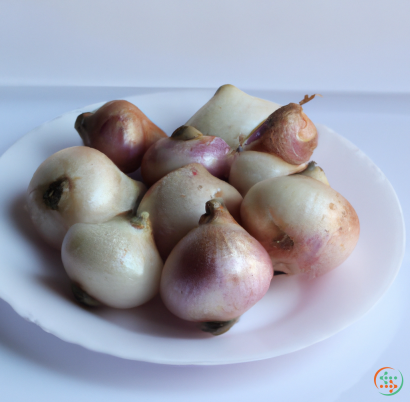Tamarinds
Living in a world full of culinary delights, tamarinds are one of the lesser known fruits for the average person. A tamarind is a sweet and tart pod-like fruit that grows on evergreen shrubs or trees. Tamarinds have been part of the human diet for many centuries. The fruit has a tart, tangy taste and is an essential ingredient in many dishes of world’s cuisines.
The Tamarind tree is native to Africa, but is now grown in tropical parts of India, Pakistan, China and several other countries. The chief commercial producers of the fruit are India, Mexico, Peru, Brazil and Egypt. All parts of the Tamarind tree are edible including the leaves, flowers and unripe pods. The pods contain a sweet and sour pulp that can be used to make sauces, jams and jellies. Tamarinds are also dried, ground and used as a spice.
Tamarinds are usually dark brown in color and range from 3 to 8 inches in length. It has smooth curvy outer shells which crack open when ripe. When cut open, the pulp inside the tamarind contains many edible seeds embedded in a canary-brown colored sweet-sour pulp. The pulp has a sticky yet tangy texture and it tastes both sweet and sour. Tamarinds are also high in several vitamins and minerals like Vitamin C, potassium, iron and manganese.
The most popular way to use tamarind is to make a drink or concentrate. It’s easy to make a delicious drink of tamarind by first pulping and soaking the tamarind in water. This creates a thick syrup-like syrup that has a sweet-tart flavor. The syrup can then be further dilute with cold water or sweetened with sugar or honey. Adding some fresh lime or tamarind nectar to this drink will add a wonderful aromatic flavor with a hint of tartness.
Tamarinds are also called the “king of all fruits” due to its celebrated health benefits, as it contains a variety of vitamins, minerals, and antibacterial properties. It has been used in traditional medicines for thousands of years for its digestive, immune boosting, and detoxifying properties. Tamarind is rich in antioxidants. These help to fight free radicals that can damage cells and DNA, causing common signs of aging like wrinkles and fine lines. The high amount of Vitamin C in tamarinds also helps to bolster the immune system and protect against infections.
Additionally, tamarinds have also been studied for their anti-inflammatory effects which could benefit those with arthritic symptoms. Thus, tamarinds is one of the healthiest and tastiest fruities in the world, as it is packed with vitamins and minerals, helps boost immunity and provides anti-inflammatory, anti-oxidant, and detoxifying properties.
Tamarinds are commonly used for flavoring curries, stews, soups, sauces and chutneys. The flesh and juice of the fruit can be easily used in many sweet and savory recipes. A popular use of tamarinds is as an ingredient in Worcestershire sauce. Tamarind will bring a unique acidic yet sweet flavor to a dish. Tamarind can also be used to make jams and marmalades, as well as candied tamarind slices. Tamarinds also make a great addition to refreshing smoothies or shakes.
Tamarinds are not just a great snack or healthy drink option, but it can also be used as a substitute for lime or other citrus fruits in many recipes. Whether you enjoy it as a refreshing drink or an ingredient in a dish, tamarinds can offer a delicious hint of sweet and sour in any meal. So don’t forget to include this amazing fruit in your diet and reap the benefits of its many health benefits!
The Tamarind is a simple yet complex fruit with a history and journey to the dinner plate that is equally intriguing. Not well known by most, tamarinds are an integral part of many cultures around the world and contribute to an array of flavors and recipes. With origins rooted in African and Asian cultures and dietary habits, the tamarind is a very unique type of fruit that is highly regarded and praised by many.
The journey of a tamarind starts in the warm climate of the tropical region, most notably Africa where the majority of the world’s tamarinds are grown. There, it is commonly found in the scorching sun of the West and East African tropics such as Mozambique and Mauritius. The tamarind tree – Tamarindus indica, is a leguminous tree with a pod-like fruit native to these areas and is well adapted to the tropical and desert climates.
First, the tree must be propagated by planting either its seeds (which is the easiest way) or by cutting the mature branches and leaving them to root the earth. The latter method is preferred as it ensures success rate and is more environmentally friendly as it does not need extra resources such as water and pesticides. Once planted, the tree takes around three to four years to reach maturity.
This is when the real journey of the tamarind begins. The tree’s trunk will elongate, branching out in large clusters as it matures and produces new shoots. In its natural habitat, the tamarind tree can reach heights of up to 10-12 meters. As it matures, the tree bears small yellow flowers which, if successful, will develop into fruits 4-6 months later.
The tamarind fruits, characteristic of the species, are low-lying pods with long, thin fibrous strands. Inside the pod, houses a few seeds which are surrounded by a thick, sticky caramel-brown pulp, which is sticky and dark brown in color. It is this pulp, which is the edible part usually used for cooking and medicinal recipes. The sweetness of the pulp comes from natural sugars and acids that are present.
When the tree reaches full maturity and the pods become ripe and ready for harvest, the fruits are then handpicked by the local farmers and laborers. Careful consideration is taken so that only ripe fruits are harvested for consumption. After the fruits are picked, they are then transported to various processing centers across the region where they are sorted according to freshness and ripeness. The fruits are then further dried, packaged, and shipped off to different cities and countries around the world.
At the processing centers, these fruits are emptied of the flesh, using a process called Defibration. Immediately after being emptied, they are then put through a process of sorting and grading to make sure that only the best quality fruits are selected for packaging. Pods with imperfections and those with a low sugar content are not used, while only the best fruits containing the most sugars and the least amount of impurities are chosen.
After being prepared, the pulp is then packaged and sent off to markets and stores around the world. The pulp can also be used to make beverages, jellies, and jams, or made into powder as a flavoring for cooking. To make the powder, the pulp is further dried in ovens and then ground into a fine powder. This powder is then packaged and sold commercially, making it easy for chefs and home cooks to incorporate tamarind into dishes.
In the kitchen, tamarind is an indispensable ingredient for a variety of dishes. It has a naturally sweet and sour flavor, so it can be used in both sweet and savory dishes. Tamarind can be used to make sauces, curries, soups, and stews; as a flavoring for meats and fish; as a condiment for rice dishes; as a glaze on roasted vegetables and meats; or as a syrup or jelly.
To make the most of tamarind’s flavor, the fruit should be soaked in warm water or another liquid, such as citrus juice or vinegar. This allows the tart and sweet flavors of the tamarind to mix with the other ingredients and bring out their maximum potential.
Throughout the process of growing, harvesting, preparing, and utilizing the tamarind pulp and fruits in various dishes, one can think of the many hands and processes that take place before the tamarind can appear on a dinner plate. From the soil to the seed to the harvest, and then to the shopping bag and eventually the dinner table, tamarinds have gone through a long process of harvesting and preparation to ultimately reach a dinner plate prepared with love and care. The powerful flavor of the tamarinds is often the highlight of various dishes, allowing for a greater variety of dishes to be prepared.
The tamarinds thus, is a journey of incredible opportunities, flavors, and culinary possibilities. It is a journey that is as unique and diverse as the many cultures that enjoy its taste every day.
| Vitamin A | 0.002 mg | |
| Beta-Carotene | 0.018 mg | |
| Vitamin E | 0.1 mg | |
| Vitamin K | 0.0028 mg | |
| Vitamin C | 0.0035 grams | |
| Vitamin B1 | 0.43 mg | |
| Vitamin B2 | 0.15 mg | |
| Vitamin B3 | 0.00194 grams | |
| Vitamin B4 | 0.0086 grams | |
| Vitamin B5 | 0.14 mg | |
| Vitamin B6 | 0.07 mg | |
| Vitamin B9 | 0.014 mg |
| Calcium | 0.074 grams |
Daily Value 1.3 g
|
| Iron | 0.0028 grams |
Daily Value 0.018 g
|
| Magnesium | 0.092 grams |
Daily Value 0.4 g
|
| Phosphorus | 0.113 grams |
Daily Value 1.25 g
|
| Potassium | 0.628 grams |
Daily Value 4.7 g
|
| Sodium | 0.028 grams |
Daily Value 2.3 g
|
| Zinc | 0.1 mg |
Daily Value 0.011 g
|
| Copper | 0.09 mg |
Daily Value 0.9 mg
|
| Selenium | 0.0013 mg |
Daily Value 0.055 mg
|
| Tryptophan | 0.018 grams | |
| Lysine | 0.139 grams | |
| Methionine | 0.014 grams |
| Total Sugars | 0.131141 grams |
per 100g
|
| Myristic acid (14:0) | 0.01 grams |
|
| Palmitic acid (16:0) | 0.17 grams |
|
| Stearic acid (18:0) | 0.06 grams |
|
| Total Saturated fatty acids: | 0.24 g | |
| Oleic acid (18:1) | 0.18 grams |
|
| Total Monounsaturated fatty acids: | 0.18 g | |
| Linoleic acid (18:2) | 0.06 grams |
|
| Total Polyunsaturated fatty acids: | 0.06 g | |







